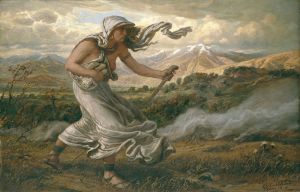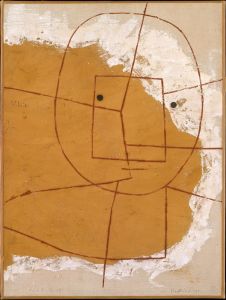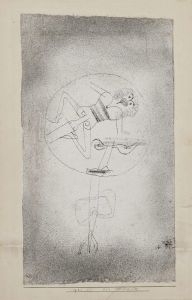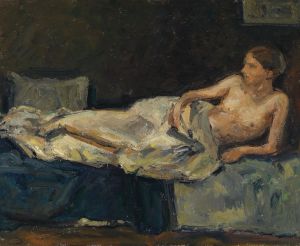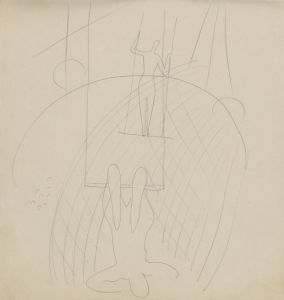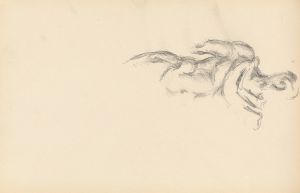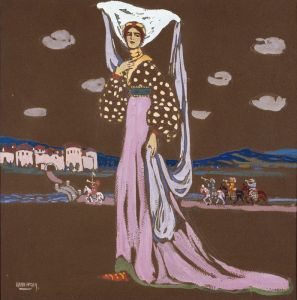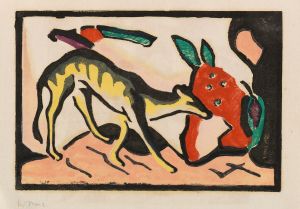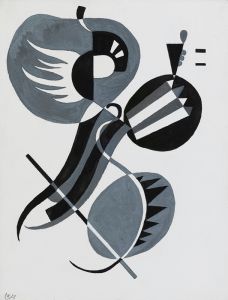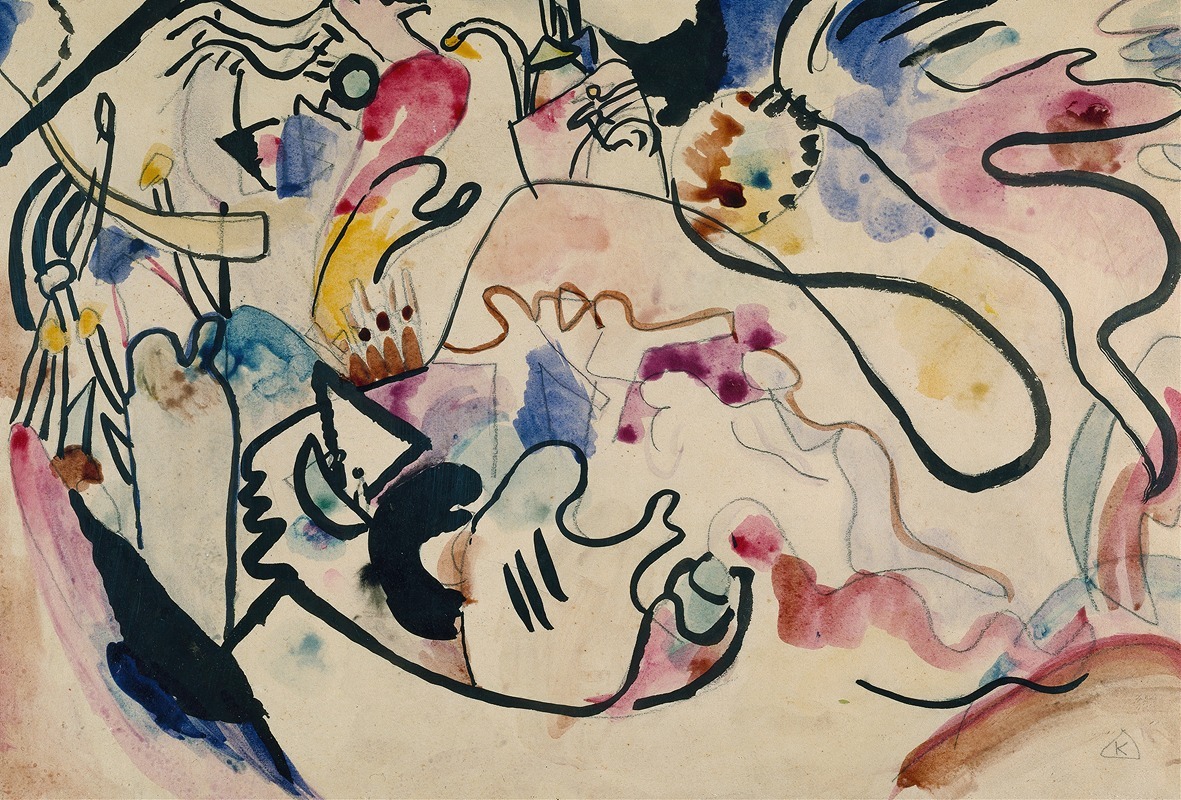
Aquarell Nr. 8 ‘Jüngster Tag’
A hand-painted replica of Wassily Kandinsky’s masterpiece Aquarell Nr. 8 ‘Jüngster Tag’, meticulously crafted by professional artists to capture the true essence of the original. Each piece is created with museum-quality canvas and rare mineral pigments, carefully painted by experienced artists with delicate brushstrokes and rich, layered colors to perfectly recreate the texture of the original artwork. Unlike machine-printed reproductions, this hand-painted version brings the painting to life, infused with the artist’s emotions and skill in every stroke. Whether for personal collection or home decoration, it instantly elevates the artistic atmosphere of any space.
Wassily Kandinsky, a pioneering figure in abstract art, created "Aquarell Nr. 8 ‘Jüngster Tag’" during a period of significant artistic exploration and innovation. Kandinsky, born in Moscow in 1866, was a Russian painter and art theorist who is often credited with painting one of the first purely abstract works. His contributions to the development of abstract art were profound, and his works continue to be studied and admired for their innovative approach to color, form, and composition.
"Aquarell Nr. 8 ‘Jüngster Tag’" is a watercolor painting, a medium that Kandinsky frequently employed to explore his ideas about abstraction and spirituality in art. The title, which translates to "Watercolor No. 8 ‘Judgment Day’," suggests a thematic exploration of eschatological or apocalyptic themes, which were not uncommon in Kandinsky's oeuvre. His interest in spiritual and mystical subjects was influenced by his belief that art could transcend the material world and evoke deeper emotional and spiritual responses.
Kandinsky's work during this period was characterized by a departure from representational art and a move towards abstraction. He was deeply influenced by music, particularly the compositions of Richard Wagner and Arnold Schoenberg, and sought to create a visual language that paralleled the emotional and expressive power of music. This is evident in "Aquarell Nr. 8 ‘Jüngster Tag’," where the interplay of colors and forms creates a dynamic and harmonious composition that invites viewers to engage with the painting on an emotional and intuitive level.
The painting is part of Kandinsky's early experiments with abstraction, where he began to move away from depicting recognizable objects and instead focused on the expressive potential of colors and shapes. This approach was revolutionary at the time and laid the groundwork for the development of abstract art in the 20th century. Kandinsky's theoretical writings, particularly his book "Concerning the Spiritual in Art," further articulated his ideas about the role of art in expressing the inner life of the artist and the viewer.
In "Aquarell Nr. 8 ‘Jüngster Tag’," Kandinsky employs a vibrant palette and fluid brushstrokes to create a sense of movement and energy. The composition is characterized by a lack of clear focal points, encouraging the viewer's eye to move freely across the painting and engage with its various elements. This technique reflects Kandinsky's belief in the importance of the viewer's subjective experience and interpretation of art.
Kandinsky's work, including "Aquarell Nr. 8 ‘Jüngster Tag’," played a crucial role in the development of modern art. His exploration of abstraction and his emphasis on the spiritual and emotional dimensions of art influenced numerous artists and movements, including the Bauhaus, where he taught from 1922 to 1933. His legacy continues to be celebrated in exhibitions and collections worldwide, and his paintings remain a testament to his visionary approach to art.
In summary, "Aquarell Nr. 8 ‘Jüngster Tag’" exemplifies Wassily Kandinsky's innovative approach to abstraction and his belief in the transformative power of art. Through his use of color, form, and composition, Kandinsky created a work that invites viewers to explore the depths of their own emotional and spiritual responses, solidifying his place as a key figure in the history of modern art.





